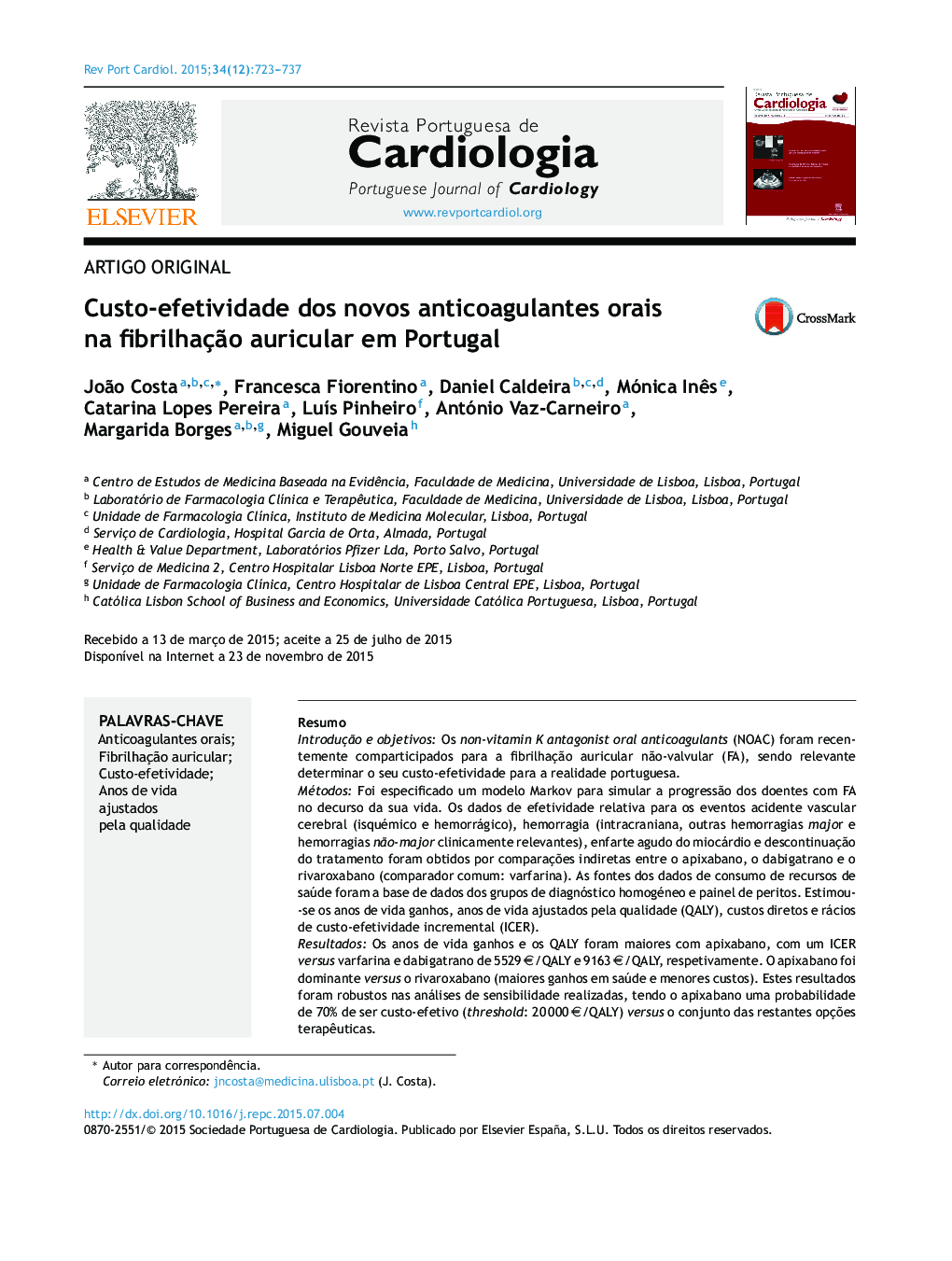| کد مقاله | کد نشریه | سال انتشار | مقاله انگلیسی | نسخه تمام متن |
|---|---|---|---|---|
| 1125603 | 954605 | 2015 | 15 صفحه PDF | دانلود رایگان |
ResumoIntrodução e objetivosOs non‐vitamin K antagonist oral anticoagulants (NOAC) foram recentemente comparticipados para a fibrilhação auricular não‐valvular (FA), sendo relevante determinar o seu custo‐efetividade para a realidade portuguesa.MétodosFoi especificado um modelo Markov para simular a progressão dos doentes com FA no decurso da sua vida. Os dados de efetividade relativa para os eventos acidente vascular cerebral (isquémico e hemorrágico), hemorragia (intracraniana, outras hemorragias major e hemorragias não‐major clinicamente relevantes), enfarte agudo do miocárdio e descontinuação do tratamento foram obtidos por comparações indiretas entre o apixabano, o dabigatrano e o rivaroxabano (comparador comum: varfarina). As fontes dos dados de consumo de recursos de saúde foram a base de dados dos grupos de diagnóstico homogéneo e painel de peritos. Estimou‐se os anos de vida ganhos, anos de vida ajustados pela qualidade (QALY), custos diretos e rácios de custo‐efetividade incremental (ICER).ResultadosOs anos de vida ganhos e os QALY foram maiores com apixabano, com um ICER versus varfarina e dabigatrano de 5529 €/QALY e 9163 €/QALY, respetivamente. O apixabano foi dominante versus o rivaroxabano (maiores ganhos em saúde e menores custos). Estes resultados foram robustos nas análises de sensibilidade realizadas, tendo o apixabano uma probabilidade de 70% de ser custo‐efetivo (threshold: 20 000 €/QALY) versus o conjunto das restantes opções terapêuticas.ConclusõesA utilização de apixabano em doentes com FA na prática clínica portuguesa é custo‐efetiva versus varfarina e dabigatrano e dominante versus rivaroxabano na perspetiva do SNS. Estas conclusões baseiam‐se em comparações indiretas. Apesar desta limitação, esta informação é relevante para os diferentes decisores em saúde.
Introduction and ObjectivesRecently, three novel non‐vitamin K antagonist oral anticoagulants received approval for reimbursement in Portugal for patients with non‐valvular atrial fibrillation (AF). It is therefore important to evaluate the relative cost‐effectiveness of these new oral anticoagulants in Portuguese AF patients.MethodsA Markov model was used to analyze disease progression over a lifetime horizon. Relative efficacy data for stroke (ischemic and hemorrhagic), bleeding (intracranial, other major bleeding and clinically relevant non‐major bleeding), myocardial infarction and treatment discontinuation were obtained by pairwise indirect comparisons between apixaban, dabigatran and rivaroxaban using warfarin as a common comparator. Data on resource use were obtained from the database of diagnosis‐related groups and an expert panel. Model outputs included life years gained, quality‐adjusted life years (QALYs), direct healthcare costs and incremental cost‐effectiveness ratios (ICERs).ResultsApixaban provided the most life years gained and QALYs. The ICERs of apixaban compared to warfarin and dabigatran were €5529/QALY and €9163/QALY, respectively. Apixaban was dominant over rivaroxaban (greater health gains and lower costs). The results were robust over a wide range of inputs in sensitivity analyses. Apixaban had a 70% probability of being cost‐effective (at a threshold of €20 000/QALY) compared to all the other therapeutic options.ConclusionsApixaban is a cost‐effective alternative to warfarin and dabigatran and is dominant over rivaroxaban in AF patients from the perspective of the Portuguese national healthcare system. These conclusions are based on indirect comparisons, but despite this limitation, the information is useful for healthcare decision‐makers.
Journal: Revista Portuguesa de Cardiologia - Volume 34, Issue 12, December 2015, Pages 723–737
